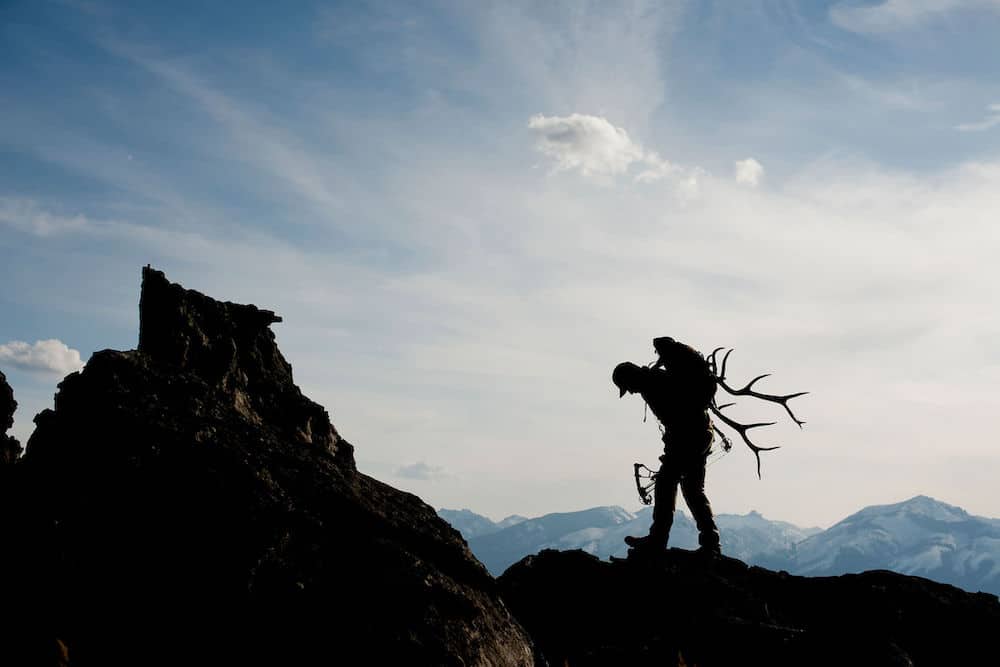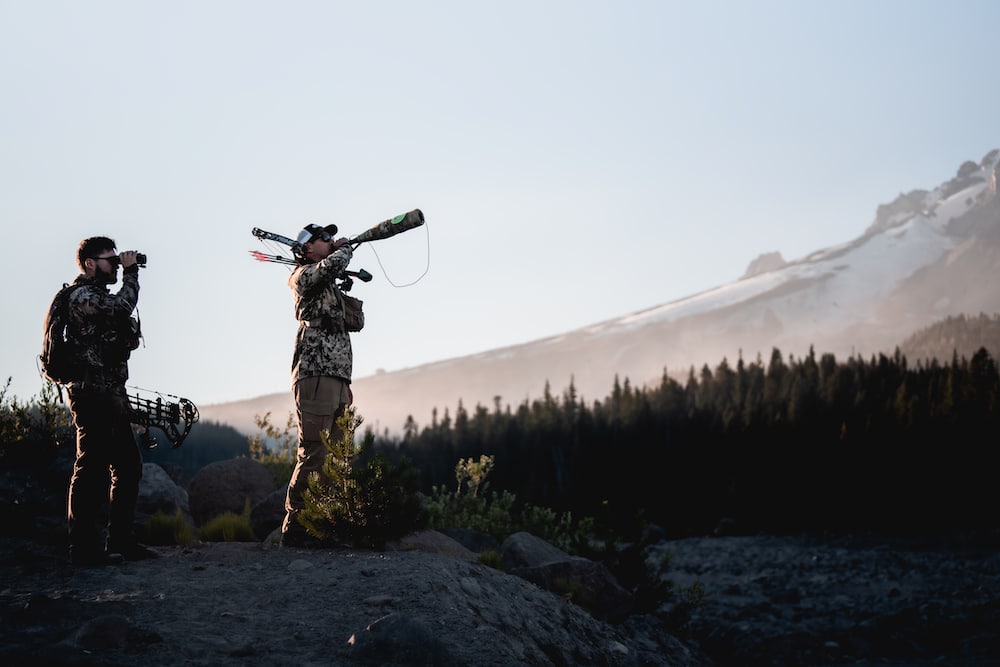Bowhunting of any sort requires preparation, but hunting the high country for elk, mule deer, sheep, goats and other mountain species is particularly challenging because it requires a lot of physical and mental preparation. Hunters need to be in good enough shape to scale mountains in pursuit of game animals, but there’s more to it than that. The human body functions differently at higher elevations.
Without proper preparation, bowhunting in the high country will not only be extremely challenging and uncomfortable, but also dangerous. Here’s how to prepare to hunt at high altitudes.
High elevations affect people because of the changes in air pressure and oxygen levels. Hunters can see these effects when traveling from sea level to several thousand feet. However, scientists say the biggest effects are seen after 7,000 feet. At these high altitudes, oxygen molecules are farther apart because there’s less pressure, which means you inhale fewer oxygen molecules per breath. At just 6,000 feet, we exhale twice as often as we do at sea level, according to the Rocky Mountain Elk Foundation.
The higher you climb, the less oxygen per volume there is, and it drops rapidly. Experts define and track this by categorizing altitudes. The International Society for Mountain Medicine recognizes three altitude regions:
High altitude: 4,900 – 11,500 feet
Very high altitude: 11,500 – 18,000 feet
Extreme altitude: Above 18,000 feet

Lookout for dizziness and other signs of altitude sickness. Photo Credit: John Hafner
Altitude sickness, also known as mountain sickness, affects people who gain too much elevation too quickly. This happens when people don’t give their bodies enough time to acclimate to the changing levels of oxygen. Hunters need to be on the lookout for the signs of altitude sickness that range from subtle to severe. Recognizing the symptoms is important. Mild altitude sickness can be mixed up with common ailments. Symptoms include nausea, dizziness, headaches, muscle aches, energy loss and shortness of breath. These symptoms are annoying but not life-threatening. However, they’re enough to hamper your hunt or keep you in camp for a few days. Symptoms generally occur within about a day and resolve within a day as your body adjusts to the change in altitude.
Altitude sickness can turn life-threatening. These conditions are called high-altitude pulmonary edema, which is fluid in the lungs, and high-altitude cerebral edema, which is fluid in the brain. These ailments can be fatal within hours. Symptoms include a cough, confusion, loss of coordination and tightening in the chest. If people exhibit any of these symptoms while at high elevations, they should seek professional medical care immediately.
If you live in Denver, Colorado, also known as The Mile High City, where the elevation is roughly 5,280 feet, you’re already much better equipped to deal with mountains than a resident of Detroit, Michigan, where the elevation is less than 700 feet. Where you spend the majority of your time greatly influences how quickly your body adjusts.
When planning a mountain hunt, know the elevation you plan to hunt. Hunting at elevations around 7,000 feet is different from elevations of 12,000 feet. Look at maps of the area to determine the elevation. If you’re going with a guide, ask the outfitter. Knowing the difference in altitude between where you live and where you plan to hunt will help you better prepare and most importantly, know how much time to give yourself to acclimate.
If you’ve ever heard stories of alpine expeditions, like summiting Mount Everest, you’re aware that climbers follow a strict schedule for acclimatization. They don’t just race to the summit. Climbers reach various heights and then wait at that elevation for a set period before ascending higher. This is essential to their survival and success. This rest period helps the body adjust and function with the new levels of oxygen.
Your elk or mule deer camp isn’t at Everest-like heights but it’s still a good idea to give your body time to acclimate, especially if you’re traveling from a low-elevation area. The American Heart Association recommends two days of acclimation at 8,000 feet and one day for every 2,000 feet above that. Hunting doesn’t count toward acclimation. This period is meant to be free of strenuous activities. While it’s tempting to want to maximize hunt time, giving your body time to acclimate will keep you safe and healthy, therefore maximizing your time in the field.

Include cardio in your workout routine leading up to the hunt. Photo Credit: Bowhunters United
Seasoned bowhunters know that the work done in the off-season often yields success in the field. For mountain hunts, that means getting in shape in addition to shooting practice. High elevation makes everything more difficult. The better your cardio fitness, the less you’ll struggle at high altitudes. The harder you work, the more oxygen you need. Good cardio fitness will improve your stamina. If you have a good baseline, you won’t have to work as hard.
Strength training is equally as important as cardio. Many mountain hunts require a heavy pack. Not only is carrying this weight strenuous if you’re unprepared, it can be miserable in high elevations. One of the most effective ways to prepare your body for carrying a pack is by carrying a pack. The simplest way to do this is to load up your pack and go for a walk, run or use a stair climber. Some hunters like to load their packs with water bottles. This keeps you hydrated and lessens the weight as you drink. Weighted vests also work. If your body is used to carrying weight it won’t need to work as hard when the time comes.
Hydrating is important when exercising. It’s particularly important when exerting energy at high elevations. Water helps blood cells collect oxygen. At high altitudes, people lose water at a quicker rate. Staying hydrated will keep you healthy and feeling good.
Hunting at higher elevations is exciting. The views are spectacular and the game animals are challenging. Give yourself the best chance for success by being prepared. When the air gets thin, the Rocky Mountain Elk Foundation recommends remembering to READ: Rest at camp. Exercise at home. Acclimatize to the elevation. Drink plenty of water.